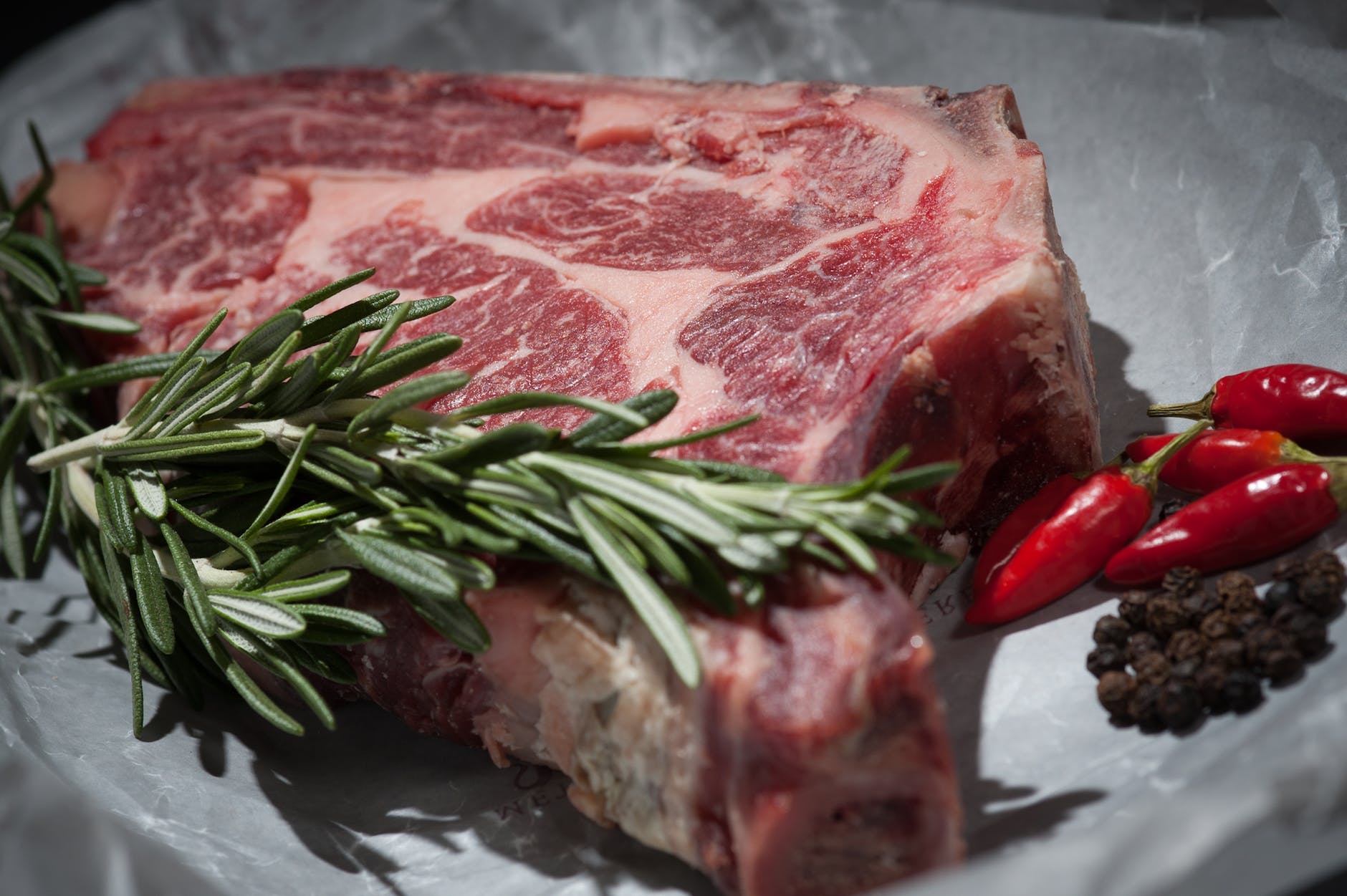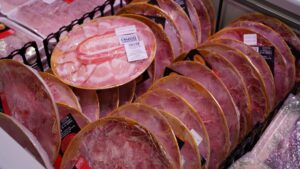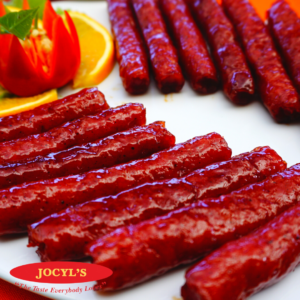
About Us
Jocyl's Food Products (a.k.a "Chorizo de Kalibo") is a bold and forward-thinking company whose goals are set to create surprising ways of developing and promoting our products. We are entrepreneurial and visionary in producing and marketing the best chorizo and other food products from our hometown - Kalibo, Aklan, Philippines.
About UsContact Info
- Tigayon Highway, Barangay Tigayon, Kalibo, Aklan
- +63362628688
- jocylsfoods@gmail.com
- Tigayon Highway, Barangay Tigayon, Kalibo, Aklan
- jocylsfoods@gmail.com
- +63362628688

The Evolution of Meat: From Hunting to Modern Agriculture
-
Jocyl's Food Products > Blog > Social > The Evolution of Meat: From Hunting to Modern Agriculture
The evolution of meat consumption has been a significant aspect of human history, dating back to our hunting and gathering days. Throughout time, the way we acquire and consume it has undergone dramatic changes, driven by the growth and development of modern agriculture. This article provides a brief overview of the evolution of meat, including the history of hunting, domestication, and modern agriculture, and delves into the benefits and drawbacks of our current practices.
History of Hunting
The earliest humans were hunter-gatherers, relying on their hunting skills to acquire meat. Hunting provided an essential source of protein, allowing early humans to grow and thrive. Early hunting practices typically involved the use of primitive tools such as spears, bows, and arrows. Meat acquisition was often a communal effort, with multiple hunters working together to take down larger prey.
As humans evolved, so did hunting techniques. Improved tools, such as the atlatl and later the rifle, allowed hunters to take down larger animals more efficiently. As human civilization developed, hunting remained an integral part of human life, though it became less essential as humans started to cultivate crops and domesticate animals.
Domestication
The domestication of animals began around 10,000 years ago and led to the development of agriculture. Domestication allowed humans to control the production of meat and other animal products while also helping to ensure a steady supply of food. The domestication of animals started with the taming of wild animals such as dogs, cats, and birds for their utility or as pets.
The domestication of livestock started with the goats and sheep, and later cattle and pigs were domesticated for their milk, wool, and meat. Domestication allowed humans to develop breeding programs that would result in animals with desirable traits, such as more meat or milk production, improved disease resistance, and more. This process led to the creation of breeds that are still commonly used today, such as the Holstein cow, which is widely used for milk production.
Modern Agriculture
Modern agriculture practices first developed during the Industrial Revolution and have continued to evolve over the last century. Advances in technology and genetics have led to significant improvements in the efficiency of meat production. The use of feedlots, where animals are confined and fed a diet that promotes rapid growth, has become widespread in the United States.
Modern agriculture has also resulted in an increase in meat consumption. It has become more affordable and available than ever before. The increased demand for meat production has led to the expansion of factory farming, and the conditions in which livestock are kept have come under criticism.
There is a growing concern that modern agriculture practices have led to a decrease in the quality of meat. Confinement, poor diets, and stress have led to an increased incidence of disease, which has led farmers to rely more heavily on antibiotics. This can have negative implications for human health, as it contributes to the development of antibiotic-resistant bacteria.
Environmental Impacts
The evolution of meat production has had significant environmental impacts. As demand for meat has increased, forests have been cleared to make room for livestock grazing and to grow crops to feed them. This has led to habitat destruction, soil erosion, and decreased water quality.
Livestock production is also a significant contributor to greenhouse gas emissions. The United Nations estimates that the livestock industry is responsible for 18% of global greenhouse gas emissions, more than the entire transportation sector. It is also a significant source of water pollution, due to the large amount of waste generated by livestock.
Benefits of Meat Consumption
Despite the negative impacts of modern meat production, there are benefits to consuming meat. It is an excellent source of protein, essential amino acids, vitamins, and minerals. It provides energy and is necessary for muscle growth and repair.
The consumption of lean meats such as chicken and fish has been shown to reduce the risk of heart disease, stroke, and some forms of cancer.
FAQs
Q: How has the demand for meat changed over time?
A: As human populations have increased, so has the demand for it. Meat consumption has risen dramatically over the last century, driven by improvements in agriculture and increased affordability.
Q: What are the environmental impacts of meat production?
A: Livestock production is a significant contributor to deforestation, soil erosion and water pollution. It is also responsible for a significant amount of greenhouse gas emissions.
Q: What are the benefits of consuming meat?
A: It is an excellent source of protein, essential amino acids, vitamins, and minerals. It is necessary for muscle growth and repair and has been shown to have health benefits. However, there are potential drawbacks, especially with modern production methods.
Conclusion
The evolution of meat production has been a significant part of human history. From hunting and gathering to modern agriculture, it has been a vital source of protein and nutrition for humans. While modern agriculture practices have led to a decrease in the quality of meat and have had significant environmental impacts, there are benefits to consuming meat, especially when it is produced sustainably. It is important for consumers to be aware of the impacts of meat production and strive to make conscious decisions about the meat they consume.
Jocyl’s Social Media:
https://www.facebook.com/jocylsfoods
https://www.instagram.com/jocylsfoods
https://www.twitter.com/jocylsfoods
https://www.pinterest.ph/jocylsfoods
https://www.tiktok.com/@jocylsfoodsproducts
#Evolution #Meat #Hunting #Modern #Agriculture
Recent Posts
- Best Iloilo pasalubong items: 10 Must-Buy Local Delicacies & Souvenirs
- Boracay Longganisa: 5 Irresistible Recipes You Can’t Miss This Summer!
- Capiz Delicacies Online Delivery: Authentic Flavors to Your Door
- Top Iloilo Delicacies: 14 Local Picks Capturing Authentic Flavors Now!
- Baked Fresh Daily! Pre-order now!…
Recent Comments
Tags
- Aklan
- Aklan Pasalubong
- Boracay
- Boracay Food
- Boracay Island
- Boracay Pasalubong
- boracay snacks
- Boracay Souvenirs
- Breakfast
- Chicken
- chicken tocino
- Chori Burger
- chorizo
- ChorizoDeKalibo
- chorizo recipe
- Delicacies
- embutido
- embutido recipe
- filipino chicken recipe
- Filipino Chorizo
- Filipino Cuisine
- filipino food
- Filipino Longganisa
- Filipino Sausage
- foodie guide
- homemade
- Iloilo
- Iloilo Food
- Iloilo Pasalubong
- ingredients
- JocylsFoods
- longaniza
- longganisa
- longganisa recipe
- meat
- Pasalubong
- pinoy recipes
- pork tocino
- recipe
- Recipes
- skinless longganisa
- snacks
- tocino
- tocino recipe
- types of longganisa








